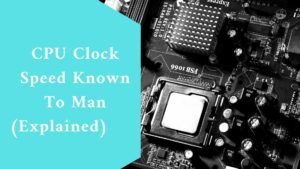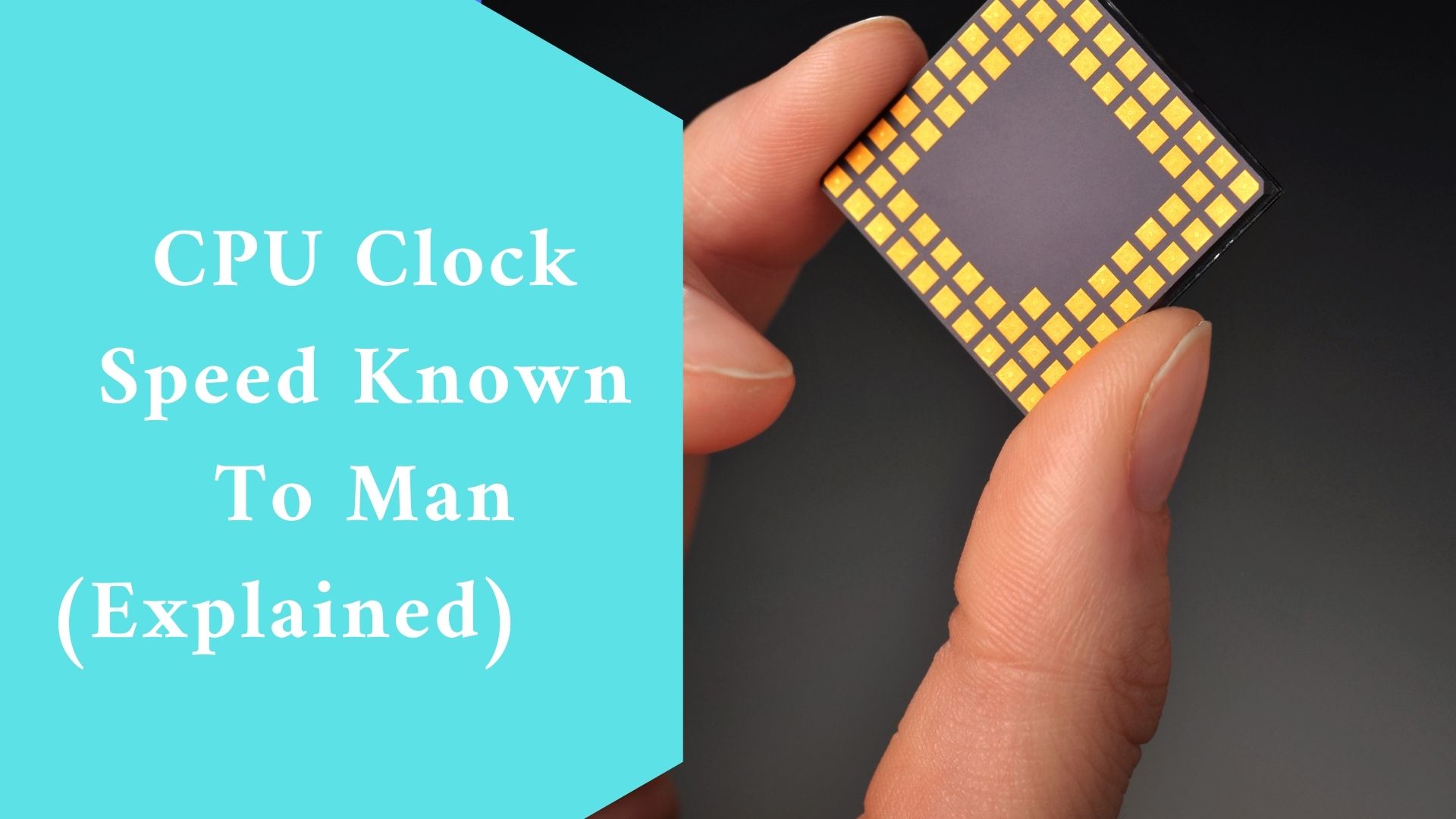Referring to a computer or a solid or weak smartphone, it is impossible not to mention the CPU and the speed, the main crucial component of a device.
CPU (Central Processing Unit), also known as a central processing unit, is considered the main brain of a device whose primary role is to process programs, input data from software, and run hardware on the computer.
What is CPU Speed?
CPU speed or CPU clock speed is measured in gigahertz or GHz, representing the number of processing cycles per second the CPU can perform.
For an easy example, a CPU clocked at 3.4 GHz can perform 3,400,000,000 rotations per second.
CPU clock speed is a metric to assess how fast the CPU performs processing data. The simplest is to compare the two CPUs on the same line; you can evaluate the CPU’s clock.
Assuming two Core i5 models belong to the Haswell generation, the difference between them lies in the clock.
One model is clocked at 3.4 GHz, and the other is 2.6 GHz. Thus, it can be seen that the 3.4 GHz CPU model will be up to 30% faster than 2.6 GHz when both operate at maximum capacity.
Where Does A Strong CPU come from?
A clock parameter on the CPU is not all to judge whether the CPU works on powerful electronic devices, but it also depends on many other parameters and factors:
- Multiplier/Core (Core)
- Number of Threads (Threads)
- Cache
- Turbo Boost
- Production process
Multiplier/Core (Core)
Each CPU core is a separate physical CPU from the other cores. For example, two seats and four or eight cores are similar to having 2 – 4 – 8 different physical CPUs.
This is what will process data and run programs or other tasks. The more cores your CPU can do at the same time or render faster.
Number of Threads (Threads)
This parameter tells us how many lines (threads) give data to the CPU to process. The more threads there are, the easier the data will circulate and the faster the CPU will process.
Cache
It is a place to store data and wait for the computer hardware to process. Its purpose is to speed up processing like a transit station or cargo port.
Turbo Boost
is a performance-enhancing technology that helps systems operate at higher speeds while extending battery life.
Turbo Boost automatically adjusts the clocks of each core independently to suit processing needs.
Production process
The CPU contains billions of tiny transistors (transistors). The number of nm that we often call “14nm process” or “7nm process” is the size of these transistors.
The smaller these transistors are, the less power they use and can help gauge the power of a CPU.
How Does Clock Speed Affect Gaming?
Before the development of multi-core CPUs, clock speed was thought to be the essential specification to compare single-core processors.
It is now considered together with the number of cores, the CPU cache, and the amount of power consumed.
Depending on the game’s engine and the tools used to produce it, the effect of clock speed varies from game to play.
Some gaming engines, like the Dunia in Far Cry: Primal, benefit more from excellent single-thread performance than multithreading, according to benchmarking websites like Tom’s Hardware. 2 However, many more recent AAA games, particularly those built on multithreading-friendly technologies like Unreal Engine 4, can benefit from both more cores and faster clock speeds.
How Can Your CPU Clock Speed Be Changed?
Increasing the CPU clock speed to increase processing power is known as “overclocking”4. When combined with a motherboard chipset that allows overclocking, Intel CPUs with a “K” in the name include an unlocked “multiplier” for simple overclocking.
Even with high-end CPUs like the most recent Intel Core i9 chip, overclocking can result in better FPS5.
Find out more about finding a stable overclock and maximizing the performance of your current gear here.

The Importance of Clock Speed
A reliable measure of your processor’s performance is its clock speed. Although multi-core performance is well recognized as necessary for applications like video editing and streaming, many modern video games still operate best on CPUs with the greatest clock rates.
Every second, your CPU executes several instructions (low-level operations like arithmetic) from various programs.
Your CPU’s clock speed, expressed in GHz, tracks how many cycles it completes per second (gigahertz).
Technically speaking, a “cycle” is a pulse timed by an internal oscillator, but for our purposes, they serve as a foundational measure of a CPU’s speed.
The CPU has billions of transistors that open and close during each cycle.
At 3.2 GHz, a CPU performs 3.2 billion cycles per second. (The speed of earlier CPUs was expressed in megahertz or millions of cycles per second.)
In certain circumstances, one instruction may be processed across several clock cycles, whereas in other cases, numerous instructions may be finished in a single clock cycle.
Comparing clock speeds across CPUs from the same brand and generation is better because various CPU architectures execute instructions differently.
For instance, a CPU from five years ago with a more incredible clock speed could not function as well as a modern CPU with a lower clock speed because the current design deals with instructions more effectively.
Because it distributes workloads across more cores and has an enormous CPU cache, an Intel® X-series processor may perform better than a K-series processor with a higher clock speed.
However, within the same generation of CPUs, a processor with a higher clock speed frequently outperforms a processor with a lower clock speed over a wide range of tasks. This is why comparing processors of the same brand and age is so important.
Final thought
The speed and efficiency with which applications load and function greatly depend on the performance of your CPU, the “brain” of your computer.
The performance of a CPU may be measured in several ways, though. The importance of clock speed, often known as “clock rate” or “frequency,” cannot be overstated.
If you’re unsure how to verify your clock speed, select “System Information” from the Start menu (or the Windows* key) and click.
Under “Processor,” information about your CPU’s model and clock rate will be shown.
Related Article:
How Do You Fix An Underperforming AMD Ryzen CPU? (Explained)

